Instead of screaming into the void of Twitter, I bring you a weekly highlight reel of what it’s like going places in Greater Hartford when one is gloriously car-free. These posts are on a slight time delay because nobody needs to know exactly where I am when I am there.
When I’m not emotionally exhausted from educating people about things like how wrong it is to suggest children be covered in reflective tape so they can use public space safely, I’m trying to actually live my life. That means visiting the park (photo above) or (carefully) viewing easily smashable art at the Wadsworth Atheneum (photo below) or decorating my house and yard for Halloween or going to a comedy show. All achievable without a car, largely because I made that decision to live in a walkable community when I bought my house over a decade ago.
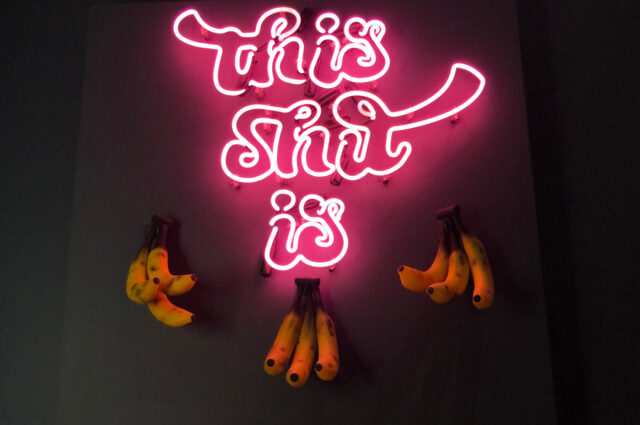
But there are common practices that really make me cringe and think that a lot of shit truly is bananas.
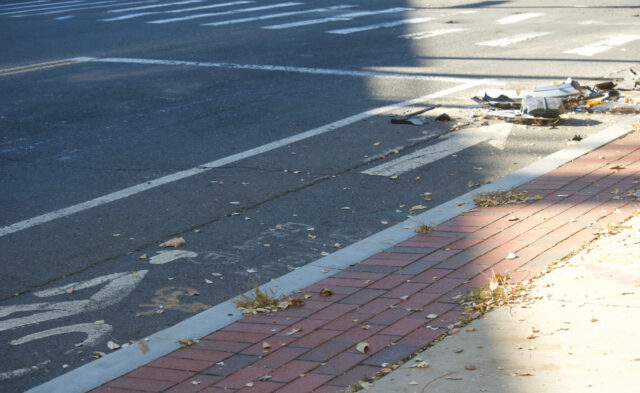
Over the weekend there was yet another fatal car crash in Hartford. This was at the intersection of Capitol and Laurel. If I’m cycling home, I avoid this intersection from a particular direction. I’ve dodged school buses and city buses blowing the red light here when I’ve crossed on foot. Dodged countless other vehicles. The view is obstructed in parts of this intersection. People drive ridiculously fast on both roads.
After crashes, I could not tell you what protocols, if any, exist for clean up. I say that observing the sheer amount of car litter that’s abandoned on sidewalks near fresh skidmarks. But here, at a fatal crash site (as opposed to a minor collision where drivers possibly left scene without calling 911) a load of debris was left on site, pushed into the bicycle lane. Look at it. That’s not simply where it fell. That was moved.
The message: your safety as a person on a bicycle does not matter. Your life does not matter.
While I understand not calling in a street sweeper at 3 AM on Saturday, this seems like something a DPW crew should be sent out to address at whatever time (8? 9?) they usually start, so as to minimize the number of people who may have to swerve around this. It’s already bad enough that this is not a barrier-protected bike lane.
I took the first photo about 36 hours after the Saturday morning collision. Reported it to 311. Saw that it was still there on Monday. Reported it again. I don’t know if it was the City of Hartford or a regular person who cleaned up the mess, but by noon on Monday the mess was mostly removed.
Why do so many people accept that this is simply how it is? That somehow it’s fine to leave garbage everywhere?
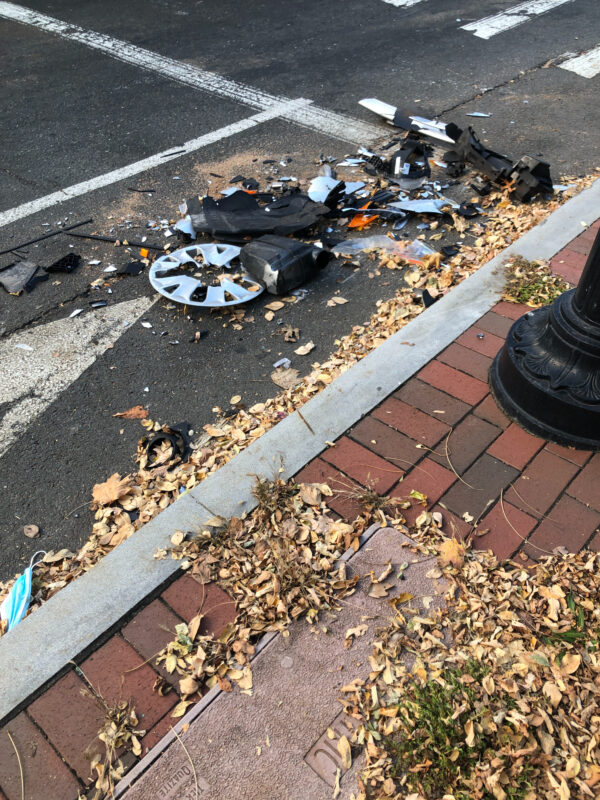
I wonder about policy. I wonder about design.
Even though the site ahead (photo below) was easy to see with many orange awareness cones and vehicles with lights in the middle of the road, for some reason this sign was plunked on the sidewalk. It wasn’t the worst that I’ve seen, but my ongoing question is: can someone with a wheelchair, walker, or stroller still fit on the sidewalk? In this case, the sidewalk condition on the bridge is so crappy that it already discourages use by anyone who needs a stable, level surface. To the work crew’s credit, the base of the sign is a bit less intrusive than many out there. Most are about double that, posing a tripping hazard.
If our sidewalks are not wide, then the signs that wind up on them need to be smaller. Why interrupt mobility for everyone?
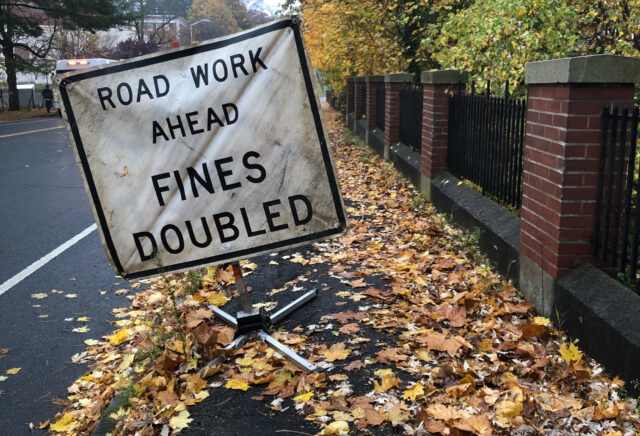
Over on Farmington Avenue (photo below), I’ve been watching all the things that get parked/dumped in the “bike lane.”
One day, the construction warning sign was entirely in the bike lane. The next day (pic below) it straddled the bike lane and sidewalk, interfering with pedestrians and cyclists. It raises the question of why these signs are as large as they are and why placed where they are.
Who has the studies on this that you know I want to see, the ones that show any strong connection between sign size and placement, and drivers slowing to a crawl to keep workers safe? Because at a glance, from the numerous construction sites I’ve been unlucky enough to walk through, I’ve seen drivers ignore the giant digital message boards as much as the smaller orange signs.
More and more, what we might take for granted as the truth about what keeps people safe, turns out to do a whole lot of nothing.
If we want drivers to slow down, put the obstacles in the road where they might scratch the paint on their cars.
I watched in yet another construction zone as a motorist tailgated a scissor lift that was driving about half a block. The driver decided to gun it, passing in the wrong lane, and without much distance. This was in a school zone.
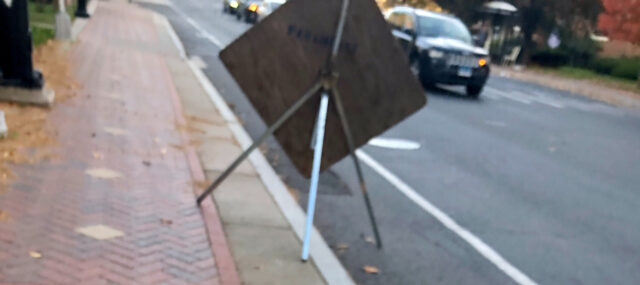
What other shit is absolutely bananas?
Local media coverage being fixated on police being almost in danger. My problem with this is that reporters don’t make logical connections for readers. It’s simply part of copaganda. (The other issue is that when people strike police cruisers with their vehicles, there are legal consequences, but when it’s a civilian or civilian’s vehicle, cops do not enforce the law quite so readily)
When a pedestrian was killed in Waterbury on Tuesday night, that story vanished, to be replaced by how someone later drove into the crime scene, striking a police vehicle but missing actual humans. Good reporting would take this to the next level: how vehicles’ bright and/or flashing lights do not prevent drivers from colliding with them, and how ridiculous it is to insist that pedestrians (whether walking the dog, going home from work, or Trick-or-Treating) cover ourselves in reflective tape and wear light colors. If motorists do not stop for police cars, ambulances, fire trucks, school buses, and tow truck/construction workers in hi-vis vests . . . why does the “what the pedestrian was wearing” conversation continue?
This shit is bananas.
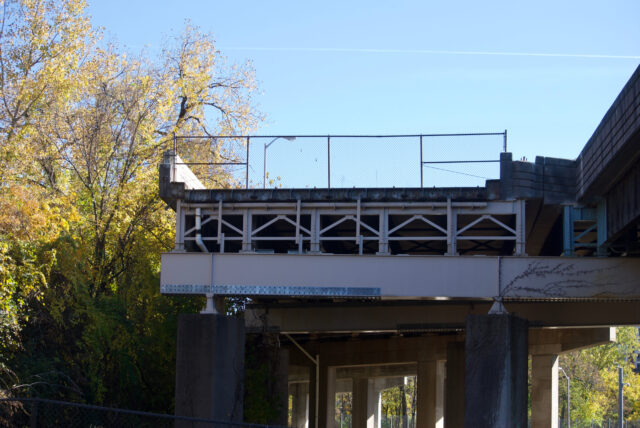
But, over in West Hartford Center, a memorial has been created for Bob O’Neal who was killed by a driver while he was standing on the traffic island — a space where people are never supposed to drive their cars. Maybe this display and the related news coverage will make a few more residents curious about what actually causes crashes. Maybe people will slow down to think about their assumption that if pedestrians just wore brighter clothes and only moved about in daylight we could all prevent our own deaths.
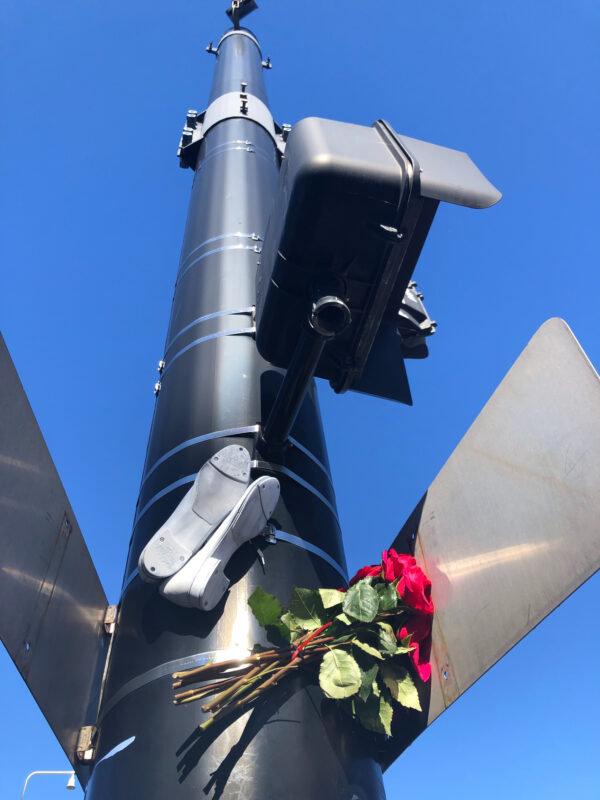
WHAT NEXT
Before voting, read this guide to how candidates think pedestrian fatalities can be prevented. Recognize that anyone whose stance is that we need to increase police or whose only solution is to have awareness campaigns, they don’t know the first thing.
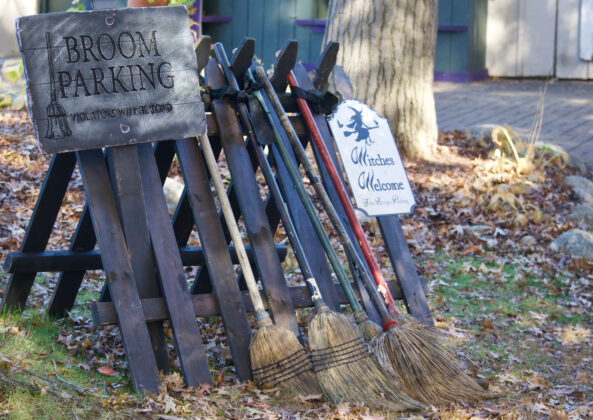
Jim Head
I go through that Capitol Ave intersection on my commute to/from work (and I did see the debris Monday morning, approaching from the opposite direction). Yikes.
West Hartford gets me riled up. The bike lanes turn non-existent at almost every intersection. Intersections are where most accidents happen, what are they doing?
Kerri Ana Provost
Good point about the intersections — this is actually where I routinely notice problems in the Farmington Ave bike lane in Hartford. There’s often someone or something parked in the lane at the intersection with Woodland, and if you’re making a left turn onto Farmington from Woodland by bike, you have to swerve when who knows what the driver turning at the same time as you is trying to do. Why do they want to increase conflict with motor vehicles?!
SV
I was almost hit last night crossing the (what I thought were) quiet streets between the Hartford Club and the athenium (Athenium Square and Prospect Street. I was covered in lights, hi-viz, and reflectors when entering the crosswalk assuming that the car that was stopped . I saw the headlights coming towards me as the driver took a left from Athenium Square stopping maybe three feet from me as I almost ditched my bike. She rolled down the window to say sorry at least…….
Kerri Ana Provost
I’m sorry to hear about this — glad there wasn’t a worse outcome. That intersection is so stressful. Part of the issue is that vehicles have been allowed to be parked in the intersection, so there’s obstructed visibility in a few directions. It’s also got a ridiculous width for this type of intersection.